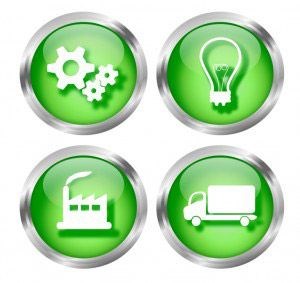 As we all know there is a lot of focus on the environmental issues today. Sustainability is a buzzword and the consumers today are more aware and conscious when it comes to their everyday products. No longer should a package only be well designed and smart, it also needs to be environmentally sustainable.
As we all know there is a lot of focus on the environmental issues today. Sustainability is a buzzword and the consumers today are more aware and conscious when it comes to their everyday products. No longer should a package only be well designed and smart, it also needs to be environmentally sustainable.
When people think about how the package has an impact of the environment they usually think about the package alone and not the impact from the manufacturing and transportations. For example, a paper bag is usually seen as more environmentally friendly than a plastic bag because it is perceived as natural. But, when you look at the production and transportation, that perception is not necessarily true. For example, it takes one gallon of water to produce one paper bag. With the same amount of water it is possible to produce 16 plastic bags. And according to www.plasticbagfacts.org paper bags needs seven times as many trucks for transportation as the PE carrier bags.
Flexible packaging, such as stand-up-pouches, has really gained a lot of popularity over the past few years, and there are many reasons to that. Not only have the companies realized that flexible packaging is a good choice economically and that they often catch the consumers eye, they are also environmentally friendly. And as we all know, environmentally thinking is good for the planet but it is also a good way to connect with the consumers.
One of all environmental benefits is that flexible packages are flat both before they are filled and after they are emptied. After emptying the package it will take very little space in the garbage bin, which leads to less transportation to the dumpster and less space taken there. They demand very little material; they are lightweight, which has a positive effect throughout the whole product life cycle. There are also benefits in relation to food waste. A flexible package is easy to empty completely, meaning that everything in the package is consumed.In general we throw away too much food in today’s society, so smart and convenient packages are a good help to keep the amount of food waste down.
All in all, the future for flexible packaging is very bright. For example,according to a forecast from Euromonitor flexible packaging within the RTD tea section will grow globally with more than 62 percent between the years of 2013 and 2017, unlike the more conventional packages like cartons and plastic bottles that will have a growth between 41 and 44 percent.
So the conclusion is that flexible packaging makes your company profile greener at a lower cost!
My name is Hanna Wallteg and I am 21 years old. I study packaging design at Broby Grafiska, a design school in Sweden. For the past eight weeks I have had my internship at Ecolean and they have involved me in a lot of different projects and I really enjoy my time here. One project I got was to write this article. I hope you will find it interesting. Have a great day!
Text: Hanna Wallteg